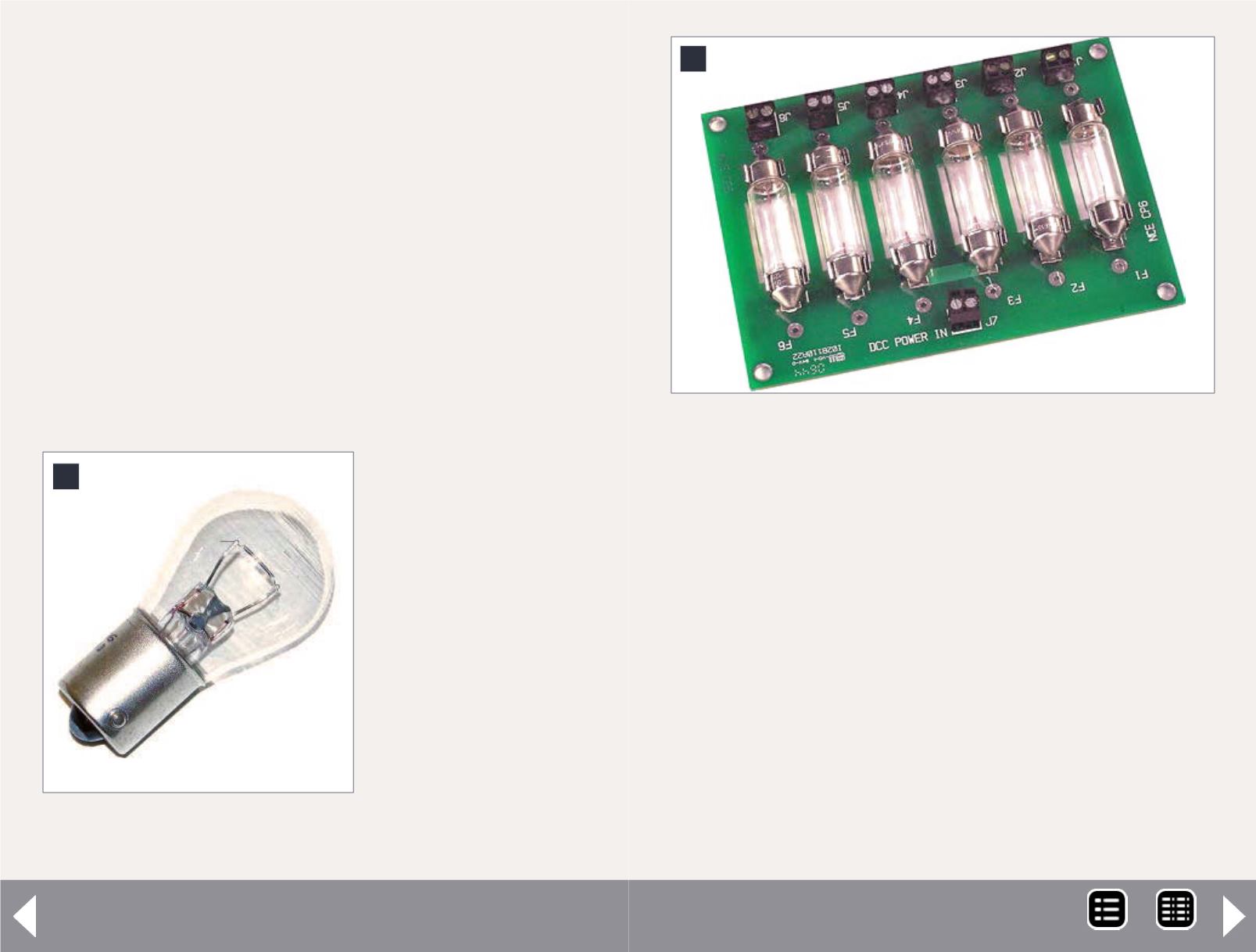
DCC Impulses Column - 2
Light bulbs
Light bulbs in series with the potential shorting point are the
most rudimentary version of short circuit protection. They are
not circuit breakers, but circuit protectors.
Implementations run the gamut from a simple 1156 (2.1 amp)
automotive bulb connected between the DCC bus and the frog
of a turnout, to the 6-position unit sold by NCE, called the CP6.
Quickly, let’s look at how a light bulb [1] protects a track sec-
tion. When nothing is in the protected section, no current
flows and the bulb has a very low resistance (almost a direct
connection). If a loco enters the section, the power is shared
between the loco and the light bulb. Until the current being
drawn through the bulb approaches the rated current for the
bulb, the majority of the power is routed to the loco. More cur-
rent draw (a second loco entering the protected section) will
result in the bulb getting
more of the power, per-
haps glowing dimly. Cor-
respondingly, the track
voltage will drop a bit.
A full short will result in
the bulb glowing bright-
ly and the track voltage
will go to zero.
When DCC was in its
infancy, there were few
electronic circuit break-
ers. They were expen-
sive and sometimes dif-
ficult to deal with. That
led folks seeking inex-
pensive solutions.
1. 1156 automotive bulb, rated at
2.1amps.
1
Over the years, folks who have asked my opinion of bulbs have
learned that I don’t favor them. Here’s why. They can isolate
one section of the layout from another. For example, they can
prevent a short in one yard from impacting operations in an-
other yard. However, the full bulb current is flowing in the path
from the bus through the bulb and the short. If one uses a ro-
bust bulb, for example one that as a 2.1-amp rating, then the
short (perhaps a wheel crosswise on a turnout) is carrying the
full current. Yes, the power is being limited by the bulb, but
current can pit and even spot-weld parts. Also, the DCC system
is supplying that power, about 30 watts (15 volts X 2.1 amps)
to the short.
Even with their limitations, bulbs still are being installed on lay-
outs. Let’s look at their pros and cons.
2. CP6 - 6-bulb circuit protector from NCE. NCE Corp. photo.
2
MRH-Nov 2014


